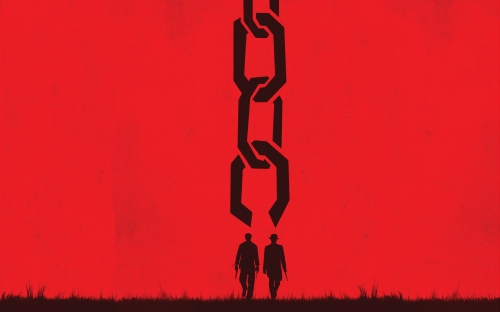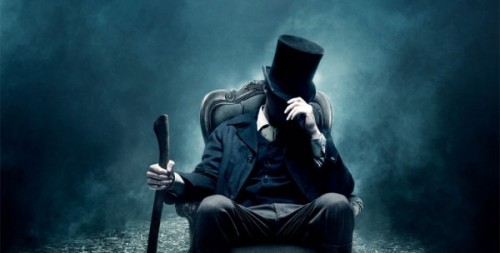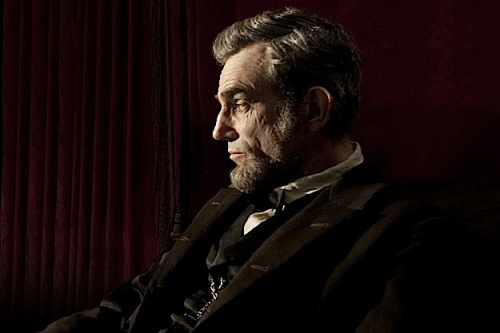Two months is entirely too long to go without an update. I acknowledge that. I’m a bad person and I should feel bad. Combination of work, family obligations, and illness have just killed my motivation over the last few weeks. As of now though I’m going to do my best to return you faithful to your regularly scheduled programming.
So, good holidays for everyone? See any heartwarming Christmas movies? I did. Specifically the one starring Jamie Foxx and Christoph Waltz called Django Unchained.
Discussing this movie in the same sentence as controversy isn’t exactly breaking news (my own fault for letting this go so long), but I think its worth looking at it in a slightly larger context. Django is actually the third major film released this year to deal with the Civil War and Antebellum time period. The others have ranged in tone from the rather serious, to the rather less-so. I’d say Django falls somewhere in between the two poles, but all three are bound together by a peculiar common thread. All three movies, Lincoln, Abraham Lincoln Vampire Hunter, and Django Unchained are staunchly and stridently anti-revisionist. This is not to say that they don’t engage in a degree of their own revisionism, but rather that their version of events makes a statement about the dilution of history. Specifically, each constitutes and attack on the “Lost Cause” of Civil War cinema.
The “Lost Cause” broadly constitutes the school of pop history in literature and film which portrays the Civil War primarily as a contest for the preservation of Southern culture. The antebellum South and the Confederate States are treated as a kind of golden age of chivalry, gentility, and agrarian values destroyed after a valiant struggle by the aggressive industrial power of the North. This will sometimes co-opt related but distinct themes like national tragedy and reconciliation into its narrative, but always conspicuous in its absence or subdual is the question of slavery. The inherent racism of these narratives, invested as they are in the historical rehabilitation of racist institutions, is sometimes comparatively benign (though no less insidious), such as in Gone With the Wind or the more recent Gods and Generals. At other times though it has been startlingly overt, as in the prototype of Lost Cause film, D. W. Griffith’s (in)famous Birth of a Nation. Now in recent years there has been some progress against this strain of thought, Glory and Confederate States of America being excellent examples, but they are fighting against over a century of ingrained Lost Cause mythology in our culture.
To say that even today discussion can be complicated when it comes to the Civil War would be a titanic understatement. It is difficult to reconcile bravery with an unjust movement, and given the strong ties of place and ancestry we still attach to the War no one wants to have been “in the wrong.” At the end of the day though ignoring painful truths does a greater disservice to memory than acknowledging and engaging with them. Lincoln, ALVH, and Django all attack the underpinnings of Lost Cause revisionism, whether it be through satire, the forced discussion of uncomfortable facts, or a combination of both. Their refusal to buy into our accepted legends is what lends these films uncommon merit as works of entertainment.
In Django Unchained this attack is probably the most self-conscious, due to director Quentin Tarrantino’s particularly cinematic sensibility. The plantation scenes use the soft focus and saturated color palette of “classic” filmmaking to evoke Gone With the Wind‘s idyllic presentation of the antebellum. It then brings that silver lens to bear on the sickening foundations of that vision and splatters the screen with the technicolor blood of its perpetrators. The hooded outlaws who attempt to lynch the protagonists parallel the “heroic” Klansmen in Birth of a Nation, and are portrayed in this as ruffian morons. The character of the genteel southern aristocrat is here the film’s moral nadir, a walking ethical vacuum and distillation of everything loathsome about Lost Cause mythology. By contrast the black protagonist, so often a passive role in Civil War narratives, is here a participatory agent of rare energy and complexity.
Abraham Lincoln Vampire Hunter is less self-aware in its mission, but it gets the job done. It’s preferred method of subversion is satire. Here the heroes of Lost Cause culture are cast as literal parasites, sucking the blood from the their black slaves to sustain their decadent old world lifestyles. Its a pretty blunt metaphor, but it drives the point home. Such a stark reflection in the form of insensate, supernatural evil calls into the question the supposed righteousness of the Lost Cause, albeit perhaps not as effectively as Django, which lets the horror of slavery stand on its own mortal basis. Turning Abraham Lincoln into an axe-wielding avenger of inhuman injustice is an appropriate call for our greatest president, though it does flirt with the aforementioned trap of making black characters passive agents in a story that is really about them.
Stephen Spielberg’s Lincoln on the other hand takes the most down to earth approach to deconstructing and defeating the Lost Cause. While the least “action packed” of the three, it is probably the most heartfelt. The film’s title is appropriate in that Lincoln is the central protagonist, but its not really the biopic you might expect. Rather than act as a filmic telling of Lincoln’s life or a war film, it chooses to center on the constitutional elimination of slavery. This brings the story back around to the singularly important issue that the Lost Cause is determined to ignore: the abolition of human bondage and the removal of its stain from the American promise. This is not to say the issue is portrayed without nuance or complexity, but its moral casting is unambiguous and sets itself up to take on all challengers.
As I mentioned previously, this is not to say that these films don’t have a form of revisionism in their narrative. Rather, they serve as a counter point against a school of revisionism which has steadily infiltrated and co-opted our understanding of this moment in American history. Chances are that if you really think on it, you know exactly what I’m talking about. The iconography of the Lost Cause is so pervasive that its almost invisible if you aren’t actively looking for it. This is important because most Americans are exposed to history through its expression in our popular culture. If one takes a hard look at the way that history has been written, it isn’t difficult to say that the South has already long since “risen again.” This isn’t accusing anyone personally of being racist if they happen to enjoy the films of the Lost Cause canon (except for Birth of a Nation, with it’s blackface and Klansman and all that, ’cause that’s pretty racist). As a people we are loathe to part with the comforting fallacies of myth and memory, conflating them all too easily with truth, but the challenging of myths and memory is essential to the discovery of history. The myths of the Lost Cause are particularly poisonous in this respect, and are overdue indeed for a sweeping from our consciousness. That each of these movies should have been released so close to one another and done as well as they have may give one some glimmer of hope for the future. What has been must not necessarily always be, and the American desire for pop history may not be mutually exclusive with history that is both true and just.
















